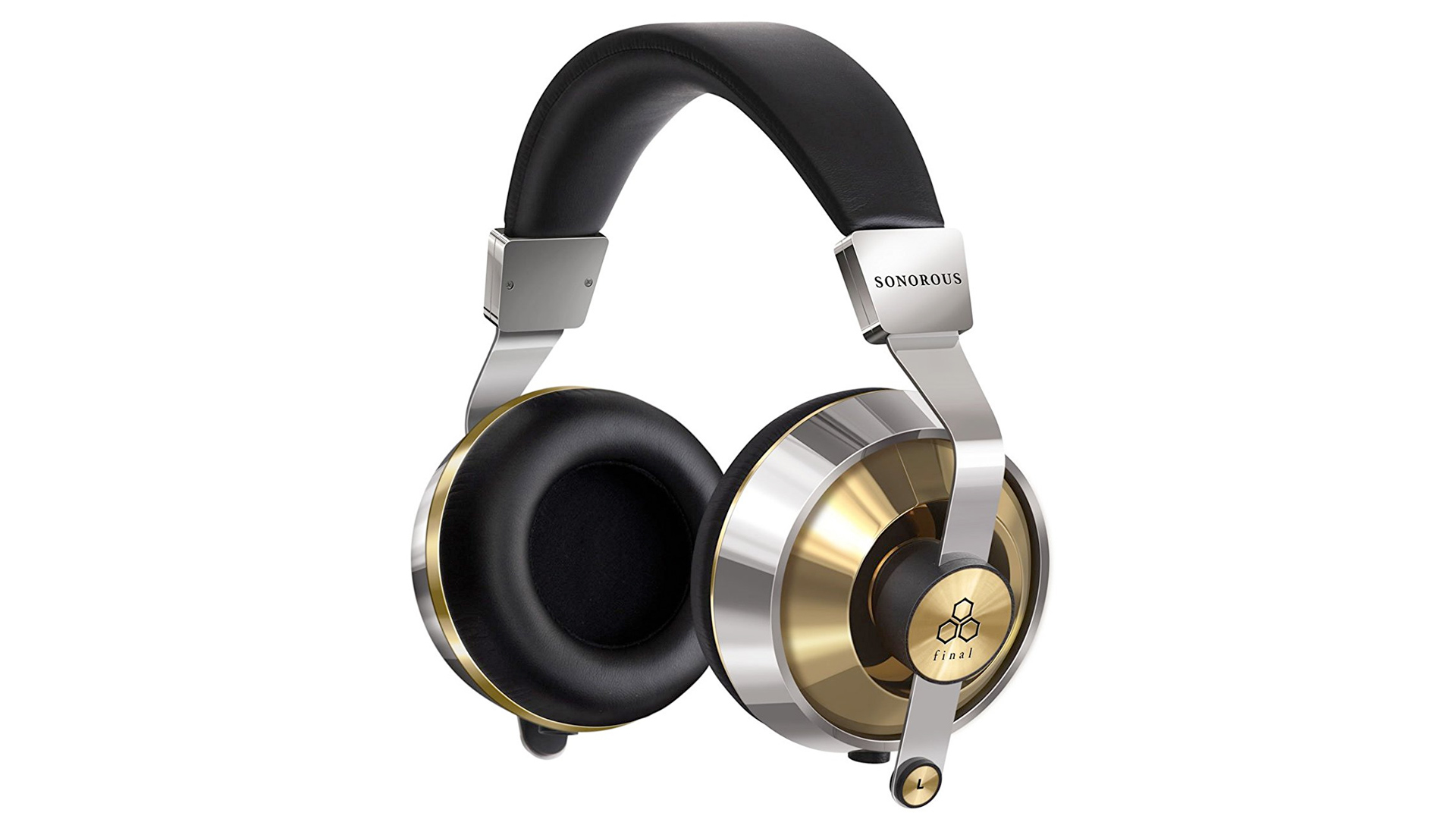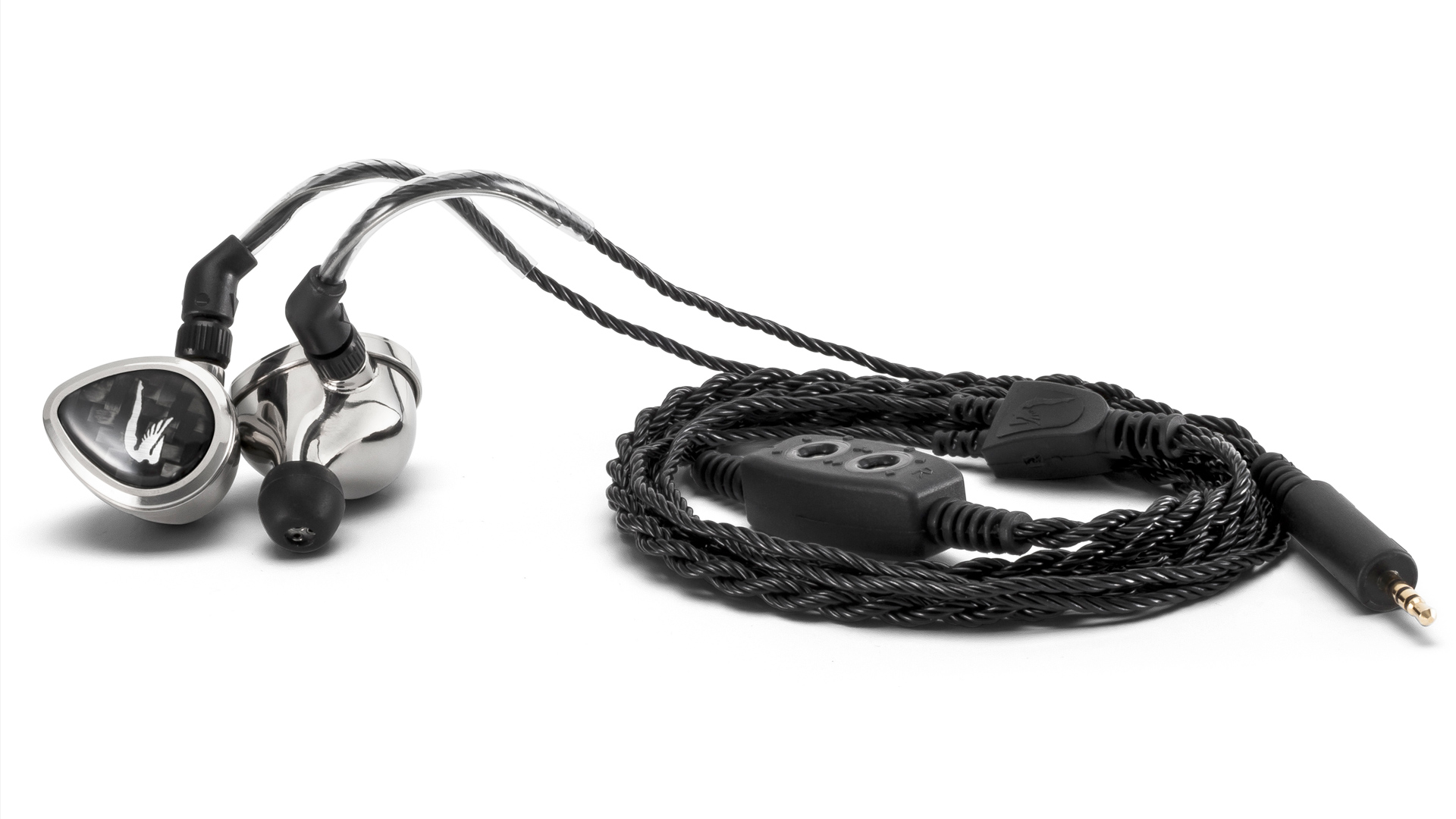10 of the most expensive pairs of headphones in the world
Cans for the true converts

Introduction
Many baulk at the idea of spending $100 on earphones. How can something so small cost so much? We tend not to remind them they’re holding an iPhone worth several times the price.
There are headphones that cost way, way more than any iPhone, though. Some more than a car. A few even cost more than a reasonable-size house deposit.
Perhaps it’s lunacy, or the best way to spend your cash: on something you love.
We’ve dug deep to find 10 of the very most expensive pairs of headphones in the world, from those with a decade or more of engineering crammed-in, to pairs that have simply been covered with diamonds for the Kanye Wests of the world.

Sennheiser Orpheus
Price: $53,400/£43,500/AU$70,845
Best for: Having the fanciest knobs (seriously)
The big daddy of all high-end headphones is the Sennheiser Orpheus. Sennheiser started making these headphones in 1991, a no-holds-barred project to see exactly how good headphones could sound.
They were electrostatic headphones, so needed their own special amplifier, and only 300 pairs were made. They were also ridiculously expensive at $16,000, or $28,400 accounting for inflation. Collector’s item much?
After 25 years a lot of those pairs were probably falling to bits, so Sennheiser decided to come up with the Orpheus HE1060 in 2015. That’s our made-up account of their birth anyway. They cost €50,000 as of January 2017.
Given the price, the headphones look surprisingly normal. They’re huge and have fully open backs, but nothing like the space age vibe of the Sennheiser HD800S. What might make them of particular interest to the super-rich and sociopath oligarchs is the included marble amp, whose knobs and valves are motorised. They slowly extend out of the marble slab as the amp is turned on, making it look like something from a 70s spy movie.
We’ve tried the both generations of the Orpheus, and Sennheiser does seem to have improved perfection with slightly tauter bass in the newer version. Both sets sound incredible though. Obviously.

HiFiMAN Shangri-La
Price: $50,000/ around £40,000/AU$66,000
Best for: Having the biggest valves
Most Hi-fi brands have been around for decades, but HiFiMAN only began in 2005. However, HiFiMAN boss Fang Bian says the Shangri-La headphones were in the works for long before HiFIMAN even existed. It’s been a 16-year project apparently.
These are large electrostatic headphones that cost $50,000, an eyeball-melting price that matches the Sennheiser Orpheus HE1060. They do come with a gigantic headphone amp, though, which features three huge 300B vacuum tubes that are much bigger than anything you’ll find in the Orpheus amp. Bigger is better, clearly.
As electrostatics, you can expect amazing transient response, although reports from people who have tried the pair suggest it’s a classic electrostatic sound: bags of resolution, not bags of bass.

Shure KSE1500
Price: $2999/£2800/ around AU$3955
Best for: Getting electrostatic quality from an in-ear
Shure is not a company that makes products just to have something new to show off. The Shure SM58 mic? It has been around for more than 50 years. The legendary Shure SE535 earphones? More than half a decade.
We take notice when Shure comes out with new stuff, and the Shure KSE1500 will make jaws drop before you’ve even heard them. These $2999 earphones have electrostatic drivers, meaning that unusually for in-ear headphones they require a little amp box to function.
Normal electrostatic headphones are massive, heavy things, so it’s no wonder Shure took eight years to come up with these tiny in-ear ones. There’s no bling to these things, just sound with greater transparency and less distortion than just about any pair of in-ears in the world.

Final Sonorous X
Price: $4999/£3500/Around AU$6610
Best for: Backing up its bling with audio engineering
Final Audio is one of the leading figures in frankly flat-out odd headphones. It’s Japanese, and its headphones are often delightfully out-of-step with the sort of designs you'd see from a European or American brand.
The $4999 Sonorous X are some of the more normal-looking pairs it makes, but you could spot the gold and silver look from a mile off. And no, these aren’t bling bait headphones. The gold parts are either aluminium or stainless steel, the two metals used to make up the frame.
Despite the bullish look, the high price comes from intense engineering and expensive drivers rather than bits of jewellery tacked onto the surface. These headphones have a particular focus on how air moves through the cups, regulating the bass response. Exciting stuff, if you’re into that kind of thing.

Focal Utopia Tournaire
Price: Around $107,375/£86,024/AU$142,023
Best for: Being the actual most expensive headphones
Some of the only headphones more expensive than the Sennheiser Orpheus HE1060 are the Focal Utopia Tournaire. They cost €100,000, because the pair has been decorated with real gold and real diamonds by a French jeweller. That’s Tournaire, if you’re wondering.
We’re not too sure about the giant diamonds on the headband, but otherwise these wouldn’t look out of place in a glass box in a museum somewhere. Maybe Rameses was into open-back headphones.
The Focal Utopia Tournaire also have much better audio cred than most diamond-encrusted headphones as the standard Focal Utopia headphones are already regarded as some of the best in the world. They cost a mere $3900/£3400/around AU$5160, though, which tells you a lot about how much extra you're paying for the 18-carat gold and six carat’s worth of diamonds.

Onkyo Diamond
Price: $100,000/around £80,147/AU$132,240
Best for: Being most shamelessly encrusted with diamonds
If the Focal Utopia Tournaire focus too much on gold — a bit too Trump Tower, perhaps — the Onkyo Diamond might be more up your street. They cost $100,000 and are inlaid with hundreds of tiny diamonds, amounting to 20 carat’s worth. For a bit of context, a ring costing £500/$500 might have 0.1 carats of diamond.
There’s one little problem. If you saw someone walking down the street with these on, wouldn’t you assume those diamonds were Swarovski crystal, at best? The only people we can imagine wearing headphones so shamelessly encrusted are Kardashians.
The Onkyo Diamond are also based on the Onkyo H900M, which you’ll find online for around $300/£229/around AU$400. We wouldn’t accuse Onkyo of polishing a turd, as we’ve heard these headphones and they sound great. But don’t you want something a little more special under all those diamonds after spending $100,000? We’ll leave that one to you.

Astell & Kern Layla II
Price: $2999/£2299/around AU$3965
Best for: Amount of drivers per square inch
The Astell & Kern Layla II are the kind of earphones your might expect to see appear on the 1st of April as part of an elaborate tech joke.
They look like a slightly oversized paid of normal earphones, but inside each earpiece is a massive 12 drivers. Twelve. Each driver is a balanced armature, a kind that sounds great but tends to struggle with ultra-low frequencies. The solution is to have several whose sole job is to provide bass.
Four handle bass, four the mid-range frequencies and the last four pump-out treble. Getting them all to work as a team must have been an engineering nightmare. They don’t have too sound super-serious, though, as an adjustable bass dial lets you pump up the low end to a frankly ridiculous +10dB.

Noble Audio Kaiser Encore
Price: Up to £2000/ around $2495/AU$3300
Best for: Getting a completely custom look and fit
The Noble Audio Kaiser Encore are custom earphones with 10 drivers per earpiece. After the Astell & Kern Layla II, that might sound positively normal, but very few earphone makers let you customise the look as much as Noble Audio.
These are custom fit earphones. A mould of your ear is made, then acrylic shells are made to match the contours of your ears’ insides. You can choose what colour the earpieces are, put a 24k gold nugget in there, laser engrave a logo of your choice, make them glow in the dark or let one of Noble’s “wizard” artists loose on the earpieces.
The array of finishes Noble Audio can create is incredible, including incorporating real exotic wood, honeycomb, fabric and carbon fibre to let you design something completely unique: a word overused when talking about tech.

oBravo EAMT-1
Price: £3699/ around $4615/AU$6104
Best for: Putting the magic of planar magnetic inside your ears
When the oBravo EAMT-1 arrived in 2016 their big claim was of being the “most expensive” earphones in the world. Most expensive doesn’t mean ‘best’, but they certainly have interesting tech inside.
Arranged like a teeny tiny bookshelf speaker, the oBravo EAMT-1 have a 13mm main driver and an 8mm planar magnetic tweeter. Most people have never even tried a pair of planar magnetic headphones, and there are only a couple of planar magnetic earphone models in the world.
They use much flatter drivers that produce less distortion, and the claim is the sound is much more like a full-size set in scale than a normal pair of in-ears. There are also three versions of the oBravo EAMT-1, ones with wood, metal and ceramic shells, subtly altering the sound signature. As the ceramics are the priciest, we’ll take those, thanks.

STAX SR-009
Price: $4000/£3500/around AU$5290
Best for: Electrostatic thrills from an understated design
If someone says Stax, you may think of the classic soul and motown record label, but it was, and is, also the name of the grandmaster of electrostatic headphones. Or earspeakers, as Stax likes to call them.
Stax has made headphones since the early 60s and its top model today is the SR-009, which cost around $4000/£3500/around AU$5290. And that’s without the energiser amp you’ll need which will set up back an extra couple of grand.
The ultra-high price and sound quality both come down to one thing: like most of the very best headphones they’re electrostatic. With a pair like this a diaphragm under 2 micron thick is push/pulled between two charged metal plates, allowing precision control over its movement.